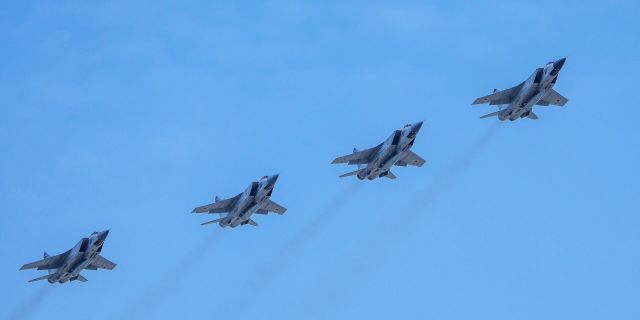A new Russian strike fighter has just entered service: how effective is the MiG-31I hypersonic missile carrier?Russia has announced the entry into service of a new strike fighter, writes MWM.
He is equipped with "Daggers" and has already managed to take part in the fighting. It is reported that three new aircraft have been deployed in the Kaliningrad region – at the very borders with NATO.
The Russian Air Force has adopted a new class of strike fighters for combat service. The MiG-31I is the latest modification of the MiG-31 interceptor (according to the NATO classification: Foxhound or "Foxogon") and its second variant for strike targets. It is the successor to the MiG—31K, which first entered service in 2017 and was developed as a carrier for the X-47M2 "Dagger" hypersonic air-launched ballistic missile.
Little is known about the new version of the MiG-31, which also carries Daggers, except that it received a new electric control system and improved flight performance. Some idea of the new fighter was given by test pilot Igor Malikov: "Any aircraft is constantly being improved. The new car, I think, will be much better in terms of achieving the specified flight parameters. All processes are controlled by electronics, the necessary data: speed, altitude, route — the computer receives from the ground. This makes the pilot's work more comfortable. The MiG-31 systems are constantly being refined, because the fighter has a huge potential for modernization."
Earlier in the 1980s, the designation MiG-31I was used for a promising option for launching spacecraft. In this case, the high speed and payload capacity of the aircraft, as well as its ability to conduct launches above the Armstrong line, would be useful.
The MiG-31I was first presented at the Victory Day Parade in April and again shown at the Army-2022 arms Exhibition on August 15. Three days later, three new aircraft were deployed at the Chkalovsk airfield in the Kaliningrad enclave near the borders of NATO, where MiG-31K had previously been deployed in February. According to the Ministry of Defense, this is being done "as part of additional strategic deterrence measures," while the aircraft will be on "round-the-clock combat duty." Operational compatibility with fighters of the 6th Army of the Air Force and Air Defense, as well as naval aviation of the Baltic Fleet, which has recently been strengthened by new Su-30SM2 fighters, is already being worked out.
It remains unclear whether the MiG-31s were upgraded from the MiG-31K already in service or entered service from large stocks of airframes in storage. The latter still seems more likely, given that the MiG-31K, as announced, will remain in service along with the novelty.
The MiG-31K with Dagger missiles first participated in combat operations in March, when strikes were carried out on Ukrainian military facilities near the Polish border. At the same time, the Dagger is valued for its ability to hit much more protected targets — surface ships, command posts and airfields under the cover of air defense. Its forte is high maneuverability and speed, as well as a long flight range of 2,000 km, although, as reported, a lighter modification is in development that will allow the MiG-31 to take more missiles on board. Hypersonic tactical missiles have played a key role, allowing Russia to asymmetrically confront NATO forces, despite the much smaller size of the armed forces.

